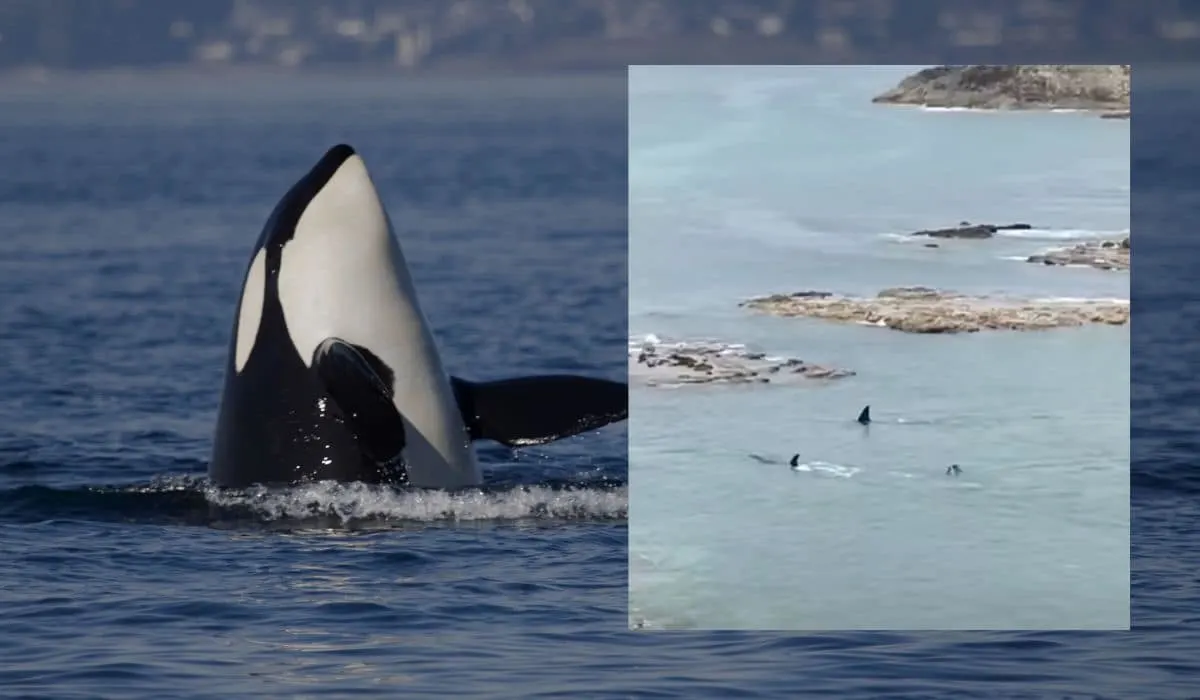Two orcas can be seen swimming past two kids in this nail-biting video.

Orcas, or killer whales, are majestic creatures that rule the ocean’s depths with no natural predators to fear. Their power and intelligence are awe-inspiring, yet they remain largely enigmatic to us.
In this article, we’ll assess an extraordinary encounter between two children and a pair of these magnificent marine predators. In a world where humans often feel invincible, this video serves as a humbling reminder of our place in the natural order and the respect we owe to the ocean and its inhabitants.
First, we will delve into the children’s close encounter with the orcas and explore the characteristics that make orcas potentially dangerous. Then, we’ll take a look at some fatal orca attacks and examine the orca population in New Zealand.
Key Points
- Two kids had a close encounter with two orcas; they swim past them with inches to spare.
- Orcas are potentially dangerous due to their size, speed, teeth, and communication skills.
- Fatal orca attacks on humans are rare and have only occurred in captivity.
- New Zealand’s orca population, unique for their stingray diet, may be declining.
- “Old Tom,” a regularly sighted orca, highlights the species’ longevity and conservation importance.
Jump ahead to any section below:
What Makes the Orca a Potentially Dangerous Animal
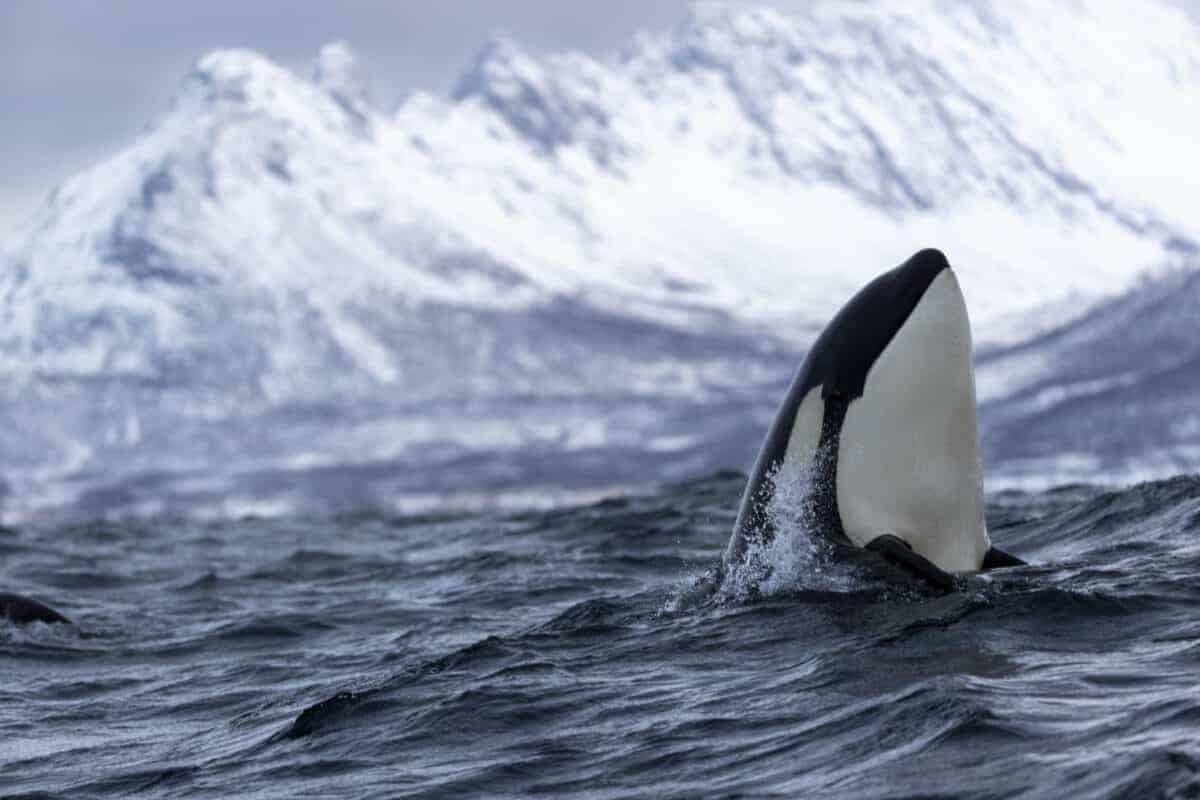
Orcas, also known as killer whales, are highly intelligent and powerful marine predators, making them potentially dangerous animals under certain circumstances. Their remarkable strengths and hunting abilities contribute to their reputation as formidable hunters in the ocean.
The ocean is full of other intimidating creatures; learn about an alien-like marine animal here.
#1 Their Massive Size
Orcas are among the largest predators in the ocean, and their size plays a significant role in their potential danger as well as their hunting prowess. Adult male orcas can reach lengths of up to 30 feet and weigh up to 10 tons, while females generally measure slightly smaller. With their muscular bodies and strong tails, they can deliver forceful blows to incapacitate or stun their victims.
#2 Their Incredible Speed
Orcas possess incredible strength and speed. They are capable of reaching speeds of up to 34 miles per hour, allowing them to swiftly pursue and overtake their prey. Their agility and acceleration allow them to maneuver with precision, making it easier to encircle and trap their prey.
#3 Their Lethal Teeth
Furthermore, orcas possess sharp teeth and a powerful bite. Their teeth, which can reach up to 4 inches in length, aid in gripping and tearing apart their prey. This predatory advantage allows them to efficiently dispatch their victims and consume them.
#4 Their Communication Skills
Another crucial factor contributing to their effectiveness as hunters is their sophisticated communication and social structure. Orcas live in tightly knit family groups called pods, which collaborate during hunts. They use complex vocalizations and coordinated hunting tactics to encircle and capture their prey, displaying remarkable teamwork and strategizing abilities.
The Video
In this captivating video, two kids have a close interaction with nature. The clip begins with two mysterious fins breaking the surface of the water. As the camera zooms in, the distinctive white markings allow us to identify them – they are orcas, the majestic apex predators of the sea.
The camera pans to reveal two children swimming further out in the ocean, quite some distance from the safe shore. They both start to panic a little bit as they catch sight of the two huge marine predators, which are heading straight toward them.
Their initial panic is understandable; the orcas showcase the incredible speed at which they can swim, and onlookers can easily see that the kids would never stand a chance if they attempted to outswim them.
However, just as the tension reaches its peak, the story takes a heartwarming turn. The orcas gracefully pass by the children, mere inches away, their powerful presence evident but their intentions benign. The children, and probably all viewers as well, breathe a collective sigh of relief as they realize they are unharmed.
This incredible encounter serves as a reminder of the delicate balance between humans and the natural world. It leaves us in awe of the power and beauty of these magnificent creatures.
Fatal Orca Attacks
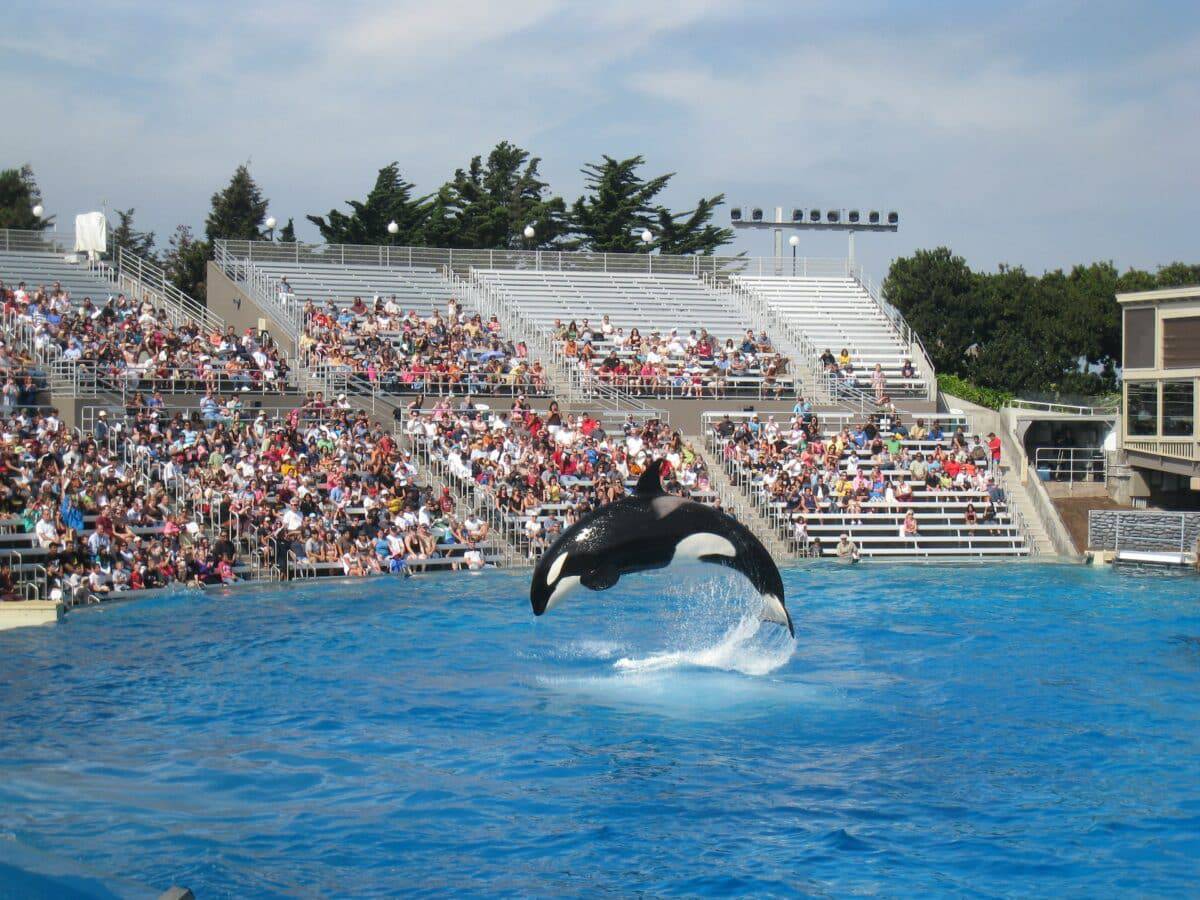
There have been several fatal orca attacks on humans. However, it’s important to note that these incidents are relatively rare and have all occurred in captivity, most probably as a result of harmful and exploitative living conditions. Here are a few notable examples:
- Keltie Byrne (1991): Keltie Byrne, a marine biology student and part-time trainer at Sealand of the Pacific, slipped into the pool containing three orcas. The whales, named Nootka, Haida, and Tilikum, prevented her from exiting the pool, and she drowned.
- Daniel Dukes (1999): Daniel Dukes was a visitor at SeaWorld Orlando who stayed in the park after closing and evaded security to enter the orca tank. Staff found him dead the next morning, draped over Tilikum, the same orca involved in the 1991 incident. Drowning and hypothermia were the causes of death, but there were also injuries and abrasions on his body.
- Alexis Martinez (2009): Alexis Martinez, a trainer at Loro Parque in Spain, died during a training session with a whale named Keto. The orca rammed him in the chest, causing fatal internal injuries.
In the wild, there are no confirmed cases of orcas killing humans. There have been a few incidents where orcas have acted aggressively towards humans, but these are extremely rare and usually involve the orcas mistaking humans for their typical prey.
On a similar topic: 5 Shark Attacks In 2 Days On Long Island.
New Zealand’s Orca Population
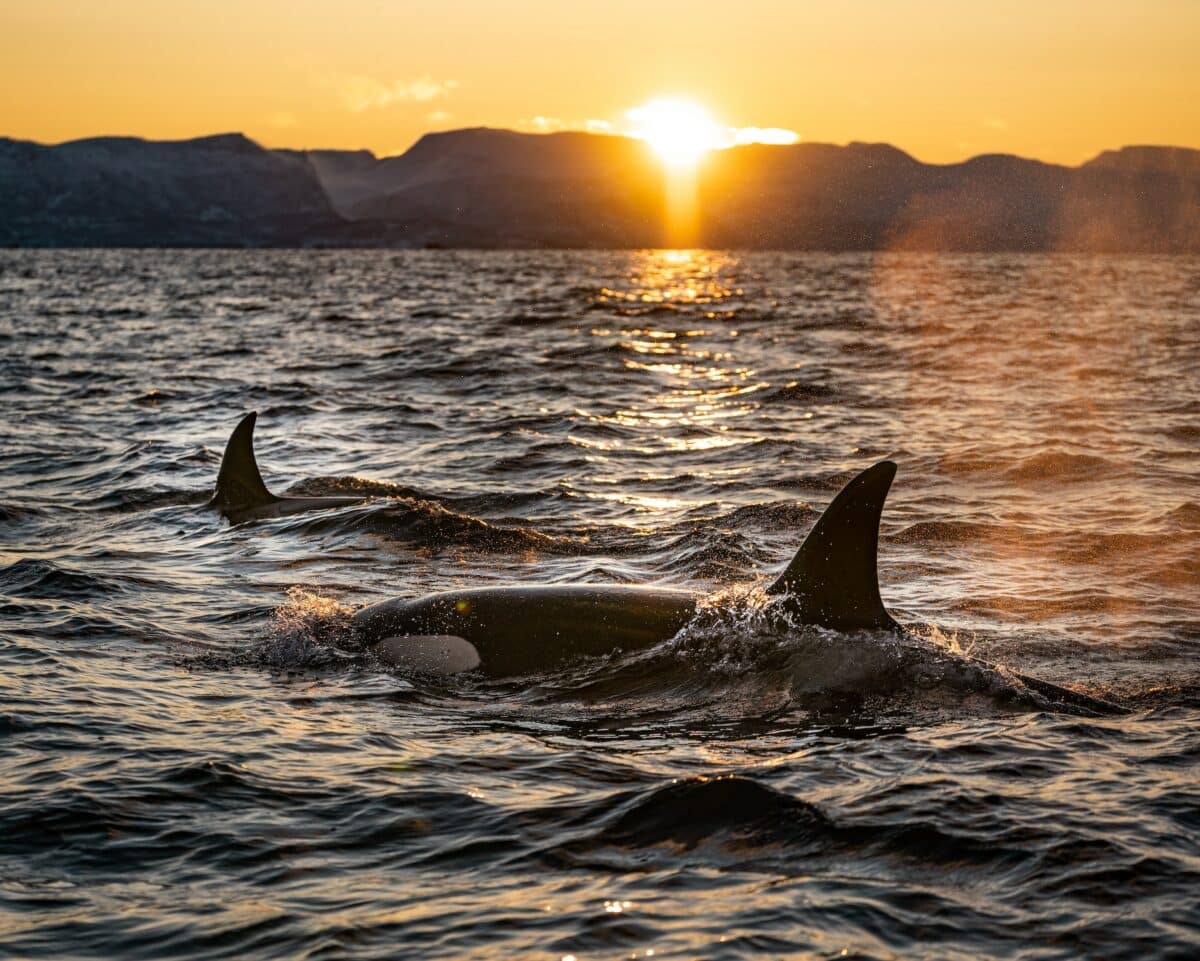
The orca, or killer whale, is one of the most frequently sighted whales in New Zealand waters, with an estimated population of around 150-200 individuals. This population is most likely a single group, with no evidence of separate pods or clans. The orcas in New Zealand are unique in their diet, which primarily consists of stingrays, a trait not observed in orca populations elsewhere.
Recent studies suggest a possible decline in the population. Although, more research still needs to confirm this trend. Threats to the orcas include entanglement in fishing gear, pollution, and the effects of climate change on their prey. The New Zealand government has recognized these threats and has implemented measures to protect the orcas and their habitat.
One notable individual, known as “Old Tom,” has been sighted regularly since the 1970s and is believed to be one of the oldest orcas in the world. His presence highlights the longevity of these magnificent creatures and the importance of conservation efforts.
FAQs
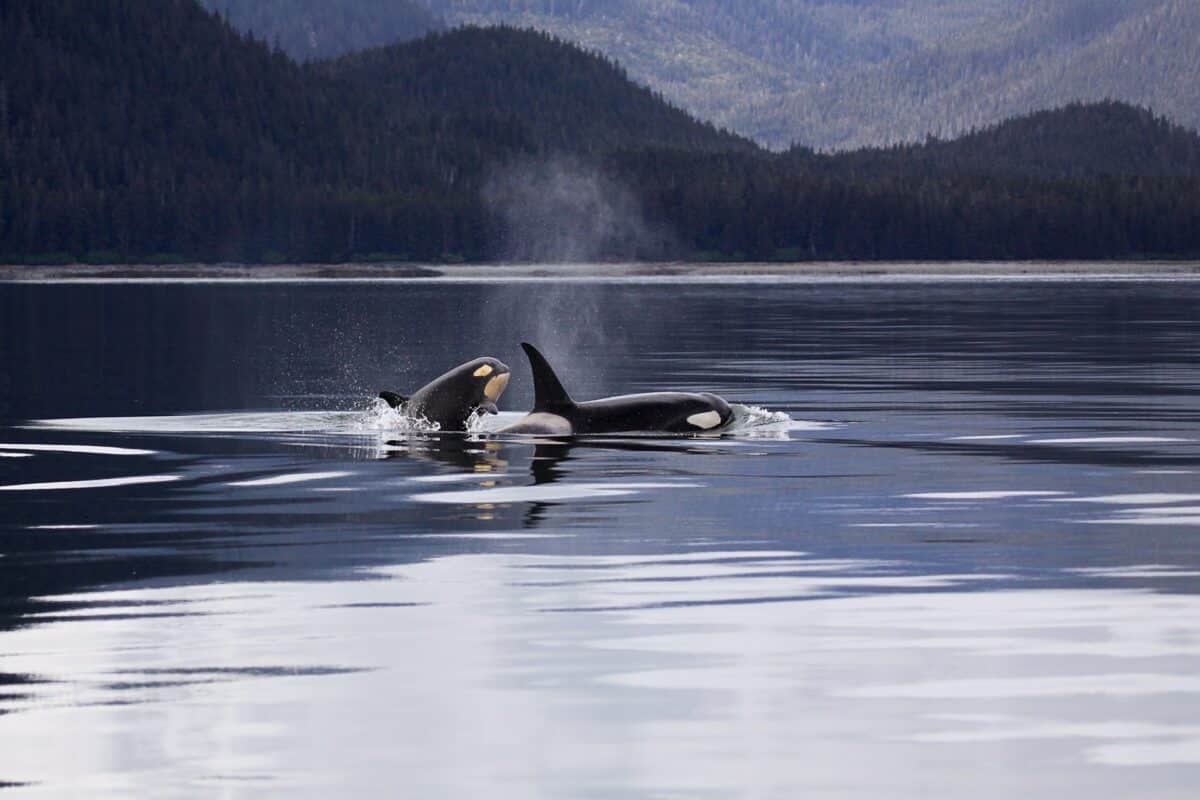
There are no known natural predators of orcas, although young orcas or calves may be vulnerable to larger sharks.
In the wild, orcas are not generally a threat to humans. There are few recorded cases of wild orcas attacking humans, and most interactions are characterized by curiosity and playfulness.
The most famous orca attack is likely the 2010 incident involving a SeaWorld Orlando trainer named Dawn Brancheau. She was killed by an orca named Tilikum after a live show when the whale pulled her into the water by her ponytail, leading to her drowning and suffering traumatic injuries.
It is highly likely that the stress of captivity, including lack of space, social structures, and mental stimulation, leads to aggressive behavior in Orcas – as with any living thing that deserves respect.
Two Orcas Swim Past Kids: Wrapping Up
Orcas, with their impressive size, speed, and hunting abilities, are undeniably one of the ocean’s most formidable predators. The video of two children’s close encounter with these majestic creatures is a poignant reminder of the respect we should hold for the ocean and its inhabitants.
While the kids were left with a memory for life as the orcas swam past them, it’s important to remember that the outcome could’ve been different. This incident underscores the fact that, contrary to popular belief, orcas are not inherently aggressive toward humans.
The awe-inspiring orca is just one of millions of reasons why we must strive to better protect our oceans. Their survival, along with the health of countless other marine species, depends on our commitment to preserving these vital ecosystems.
Thank you for reading this article about the orcas that swim past two kids! Get your hands on even more nail-biting news from the animal kingdom:
- Bald Eagle Grabs Cat For Breakfast in Wisconsin
- Anaconda Regurgitates Smaller Anaconda Who’s Still Alive
- The Blue Whale Is the Loudest Animal
- Man Saves Pelican Choking on Fish at the Last Second - April 26, 2024
- Brave Monkey Saves Kitten Abandoned in a Well - April 25, 2024
- Octopus Stuck to Diver’s Back and Won’t Come Off - April 25, 2024

